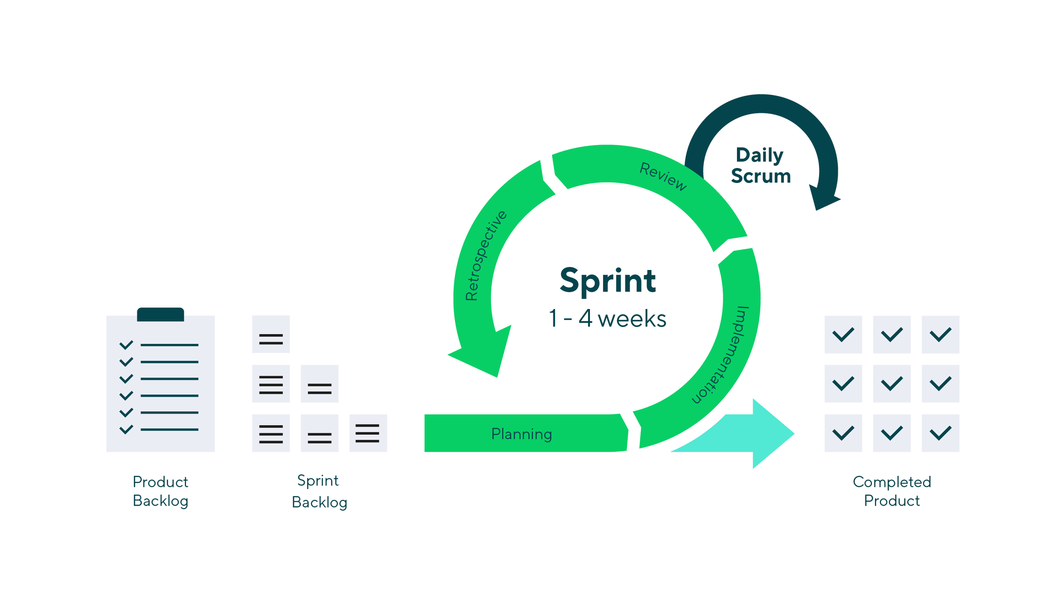Sprint cycles, also known as agile sprints, are a popular approach to project management that is widely used in software development and other industries. A sprint is a time-boxed iteration of work that typically lasts between one to four weeks, during which a team of individuals works on a set of tasks or goals. Sprint cycles are an integral part of agile methodologies and are used to break down complex projects into smaller, more manageable tasks.

Salient Features
Here are some of the key benefits of sprint cycles:
Flexibility: One of the main advantages of sprint cycles is their flexibility. Because sprints are relatively short, teams can adapt to changing requirements or new priorities without derailing the project as a whole. This makes it easier to adjust to new information or unexpected developments as they arise.
Accountability: Sprint cycles help to promote accountability within a team. By setting clear goals for each sprint, team members are more likely to take ownership of their work and feel a sense of responsibility for the outcome. This can help to improve motivation and productivity.
Continuous improvement: Sprint cycles are designed to promote continuous improvement. After each sprint, the team can evaluate their work and identify areas for improvement. This allows them to make changes and adjustments to their processes, leading to better results over time.
Collaboration Sprint cycles encourage collaboration among team members. By breaking down complex projects into smaller, more manageable tasks, team members can work together more effectively and communicate more efficiently.
Slicing Down:
The sprint cycle approach typically involves several key stages. These may include:
Sprint planning: At the beginning of each sprint, the team meets to plan the goals and tasks for the upcoming sprint. This may involve breaking down larger projects into smaller, more manageable tasks, and assigning roles and responsibilities to team members.
Sprint execution: During the sprint, team members work on their assigned tasks, collaborating as needed to achieve the goals of the sprint.
Daily stand-up meetings To stay on track and ensure that everyone is making progress, the team typically holds daily stand-up meetings. These brief meetings allow team members to update each other on their progress and identify any potential roadblocks or challenges.
Sprint review: At the end of each sprint, the team meets to review the work that was accomplished and evaluate their performance. This may involve a demonstration of the completed work, as well as a discussion of any issues or areas for improvement.
Sprint retrospective: Following the review, the team holds a retrospective meeting to discuss the sprint as a whole and identify ways to improve their processes for the next sprint.
Walkthrough:
Here is a sample walkthrough of a sprint planning process and execution
Sprint cycle duration: 2 weeks
Sprint planning (Day 1):
The team meets to plan the goals and tasks for the upcoming sprint. They review the project requirements and break down the larger project into smaller, more manageable tasks. They assign roles and responsibilities to team members and estimate how long each task will take.
Sprint execution (Days 2-13):
During the sprint, team members work on their assigned tasks, collaborating as needed to achieve the sprint goals. They hold daily stand-up meetings to update each other on their progress and identify any potential roadblocks or challenges.
Sprint review (Day 14):
At the end of the sprint, the team meets to review the work that was accomplished and evaluate their performance. They demonstrate the completed work to stakeholders and discuss any issues or areas for improvement.
Sprint retrospective (Day 14):
Following the review, the team holds a retrospective meeting to discuss the sprint as a whole and identify ways to improve their processes for the next sprint. They discuss what worked well and what could be improved, and make a plan for the next sprint cycle.
This is just one example of a sprint cycle, and the specifics of each sprint cycle can vary depending on the project and team involved.
Conclusion:
Sprint cycles are an effective approach to project management that can help teams to work more efficiently and achieve better results. By breaking down complex projects into smaller, more manageable tasks, teams can stay flexible and adapt to changing requirements or priorities. With clear goals and accountability, sprint cycles can promote collaboration and continuous improvement, leading to better outcomes over time.
Written by

Jyotshana Jha
Scrum Master/ Project manager
Amzur Technologies




